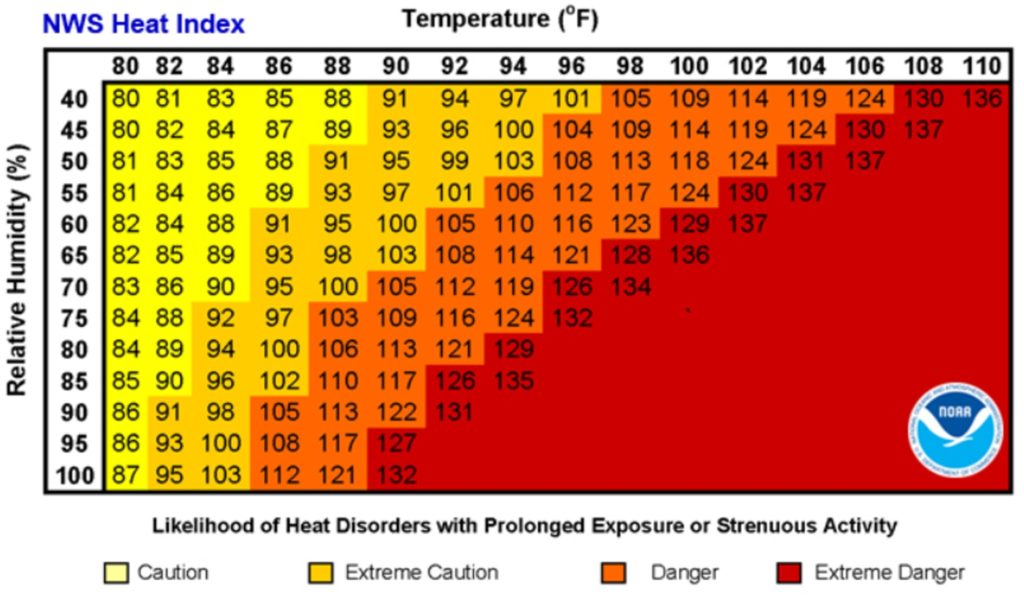HSI Chart Challenge in OSHA Prosecutions
- By Ross Di Corleto
- 01/04/2022
- No Comments

There has been an interesting development in heat stress assessment in the US. In 2020 OSHA failed in prosecuting US Postal Service under the General Duty Clause of the Occupational Safety and Health (OSH) Act, in relation to five heat stress cases.
In the court proceedings it was identified that OSHA had used the National Weather Service (NWS) heat index chart as part of their assessment process.
On July 15, 2020, one of the points noted by Judge Sharon Calhoun of the Occupational Safety and Health Review Commission was that “no evidence was presented to establish the scientific basis for the risk categories depicted on the NWS heat index chart.” Whilst the first layer of the chart, the heat index values, are scientifically based discussed in a paper by R. G. Steadman “The assessment of sultriness. Part 1: Temperature and humidity effects”, there is question on the scientific basis as to how the second layer with the colour coded risk categories was developed. There was a brief reference in figure of an article by Quale and Doehring in the National Weather Digest but to date this author has been unable to find any further reference as to the basis. It should be noted that there were a number of other issues detailed in the five cases that also impacted on the result in the failed prosecution.
However, this is a cautionary tale as many organisations across the world have been using the NWS HSI table in their assessment processes for heat stress.
OSHA failed in all five prosecutions and have not appealed the decisions in these cases. They are currently developing a heat standard potentially due for release in 2022.
Bottom Line
This does not mean that the NWS chart should not be used but as with many of the tools used in heat stress assessments, they should be used as guides only and their origins and basis need to be understood.
Want to Know More?
- Steadman, RG (1979). The assessment of sultriness. Part 1: A temperature humidity index based on human physiology and clothing science. Journal of Applied Meteorology (July).
- Quale, R., Doehring, F., (1981) Comparisons of heat stress indexes; (with applications to indoor room temperatures in winter). National Weather Digest Vol. 6, No. 3.
- Notice of Decision: SECRETARY OF LABOR v. United States Postal Service, National Association of Letter Carriers (NALC) and National Rural Letter Carriers’ Association (NRLCA) OSHRC Docket No. 16-1872 accessed on 31May 2022 at https://aboutblaw.com/R6J
 Copyright © 2025
Copyright © 2025
Leave a Reply